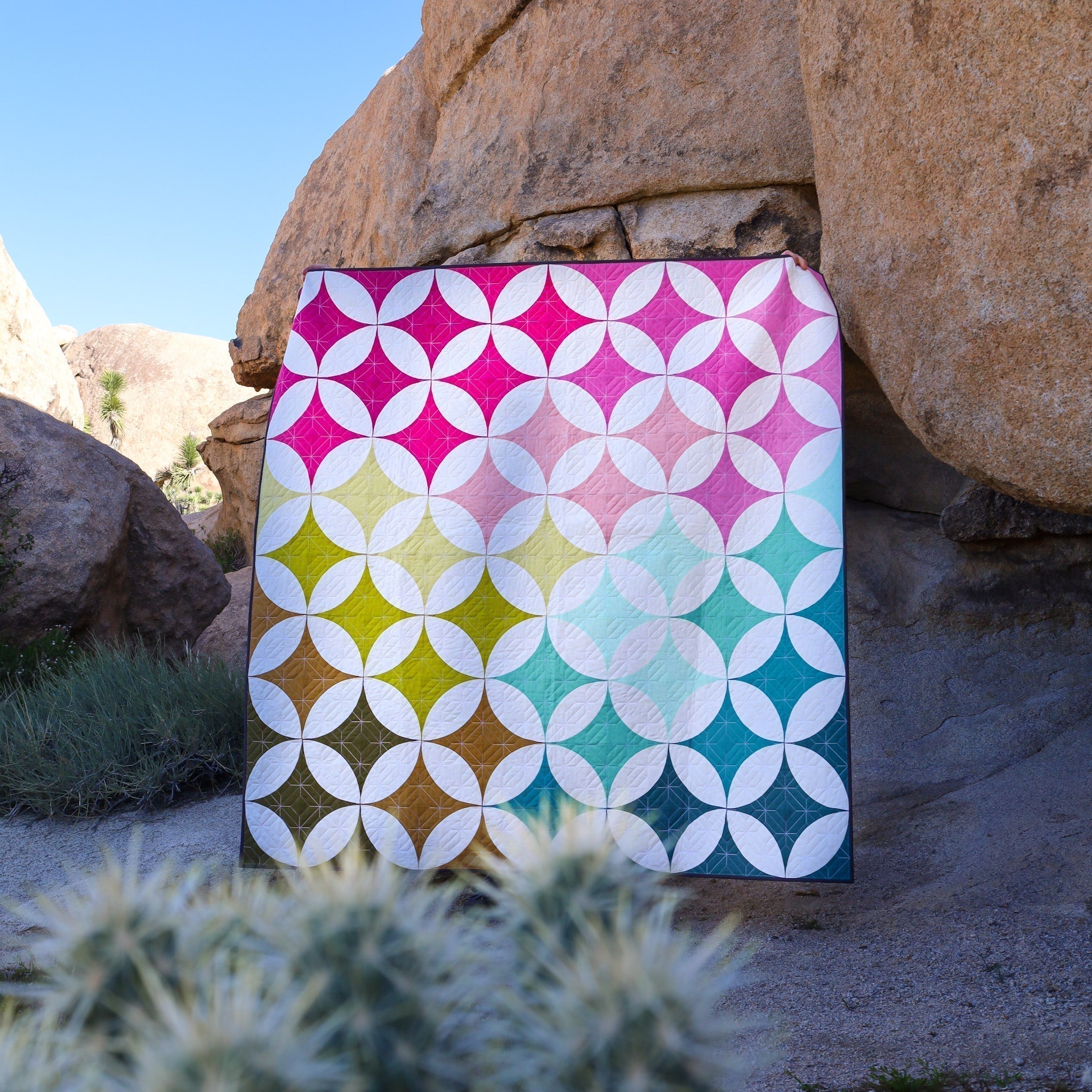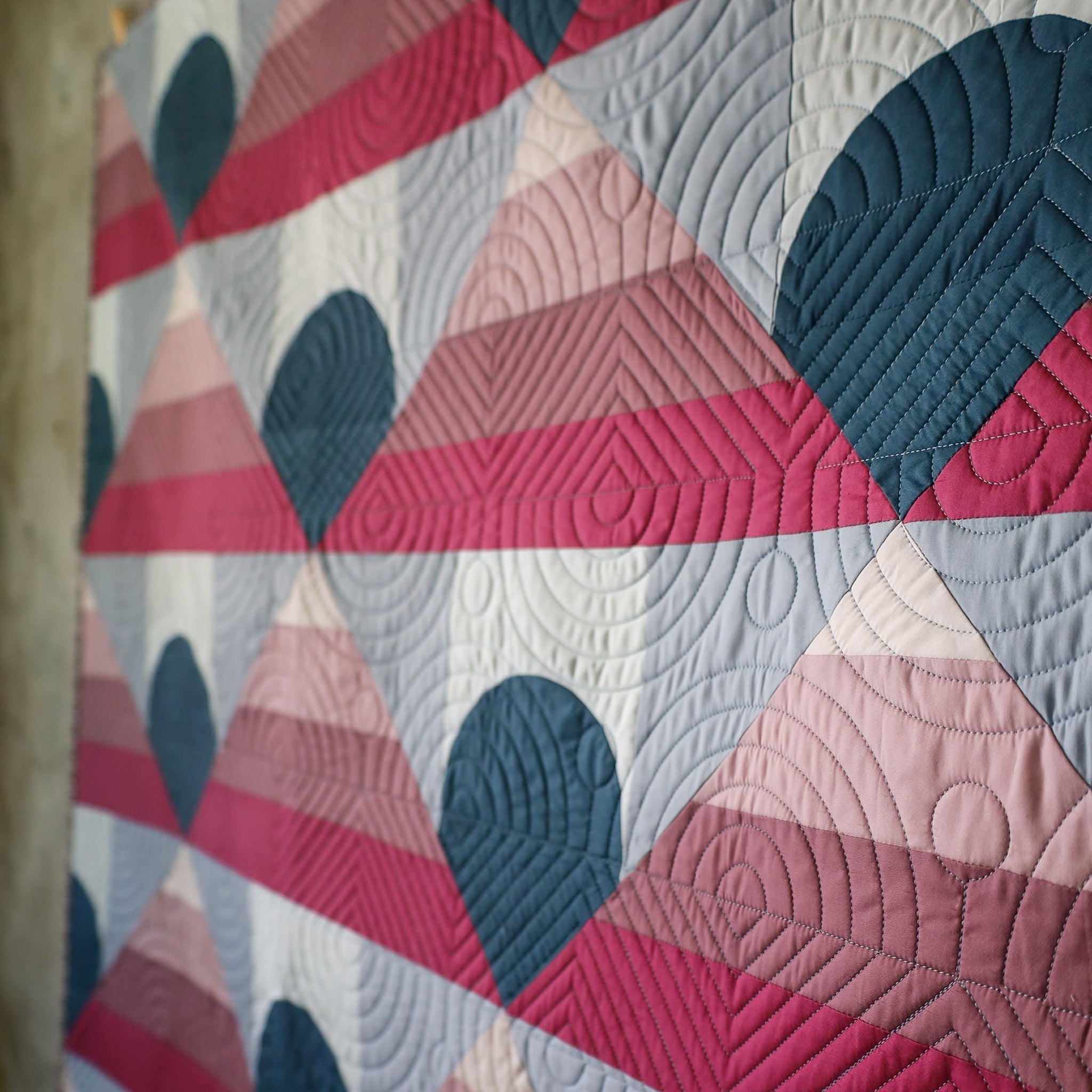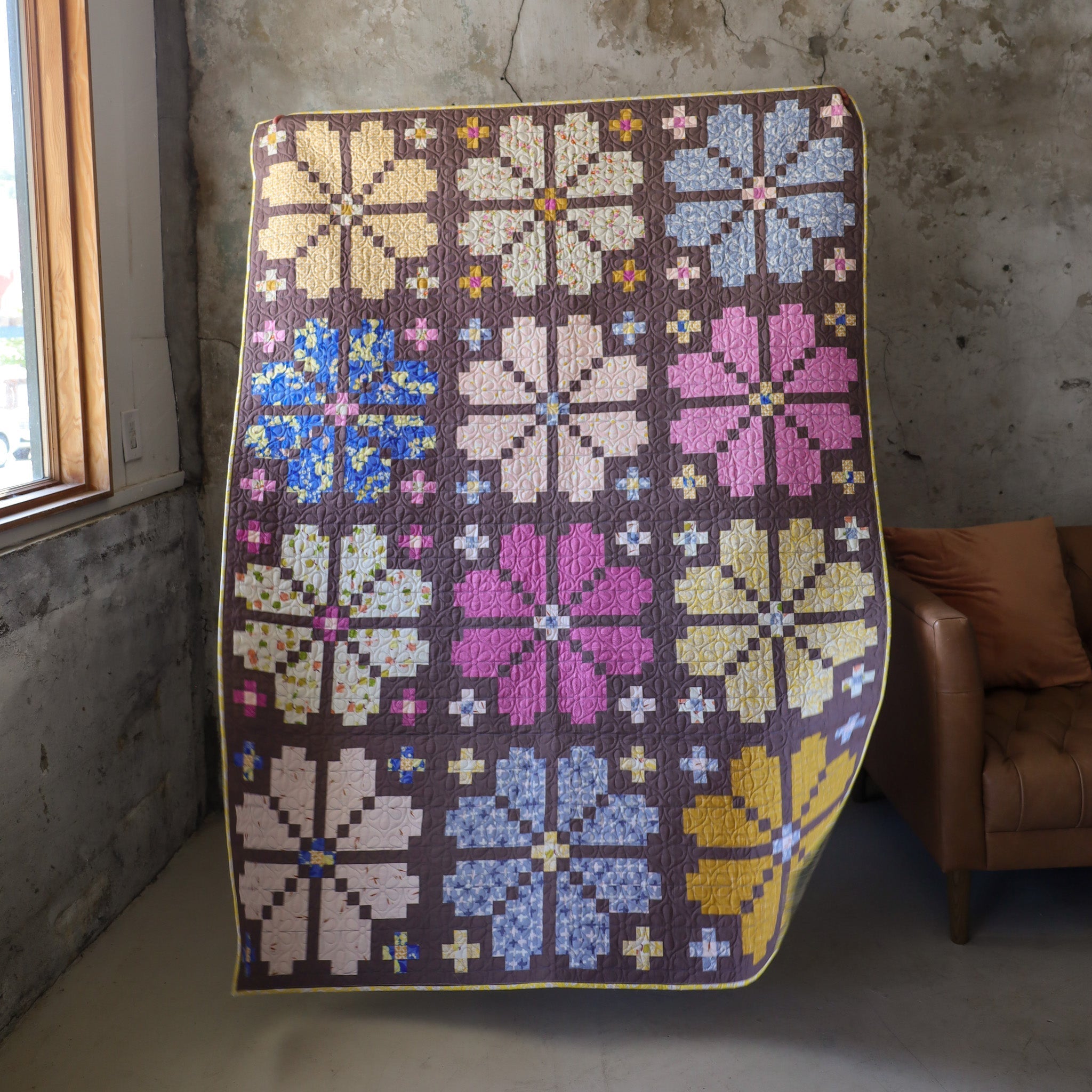The Essential Guide to Quilt Batting

The Essential Guide to Quilt Batting: Choosing the Perfect Middle Layer for Your Quilt
Discover how different batting types affect your quilt's drape, warmth, and texture.
written by: Rebecca Bratburd
If you’re anything like me, types of quilt batting don’t come to mind until your quilt top is nearly finished. Choosing the right batting can be a puzzle. Does cotton really perform differently than polyester or wool? What’s the best batting for quilts? And how true is the adage, “If it’s for you, go with bamboo”?
This is your go-to guide to quilt batting. For the record, sometimes bamboo is the best choice, but not always. 😉

Selecting batting is like setting an intention for your quilt. Since it’s the middle layer of the quilt sandwich, between the quilt top and the backing, batting is what truly defines a quilt. Only quilts have that signature “crinkle,” and if you want to enter your work into exhibitions like QuiltCon, batting makes it eligible. Two stitched layers without batting form a coverlet, not a quilt. While coverlets have their place, our focus here is quilts.
This guide offers a starting point for customizing your quilt from the inside out. The batting you pick shapes your quilt’s personality, influencing its weight, texture, and warmth.
Cost plays a role as well. Typically, batting is not included with quilt kits. With options available both online and through longarm quilters, this guide will help you stay within budget. Good news: You can love the result without overspending.
Once you’ve skimmed the surface, you’ll start to see how batting opens up new ways to personalize both your quilts and your art form.

Batting terminology
Drape
When you hear quilters talk about drape, they’re referring to how a quilt moves and folds when it’s draped over something, like a couch or a bed. A softer batting will help a quilt look nicer tossed over a bed or on a couch. A stiffer quilt, on the other hand, offers a more structured look on a wall. Neither is right or wrong, but the batting, along with the fabric and how densely you quilt, will play big parts in how your finished product will look and feel.

Loft
Loft is all about the thickness of your batting. Think of it as how puffy or flat your quilt will look when it’s finished (not to be confused with the puff quilt!). Low loft batting gives a more traditional, flat look. Medium loft is a great all-around choice, giving you a bit of softness without too much fluff. High loft creates that plush, puffy look that makes your quilt feel extra cozy and textured. It’s all about what kind of feel you’re going for!

Colors
Batting colors typically range from bright white to natural cream; black is a niche option. The color of your batting matters most when working with light colored or transparent fabrics, as darker batting might show through. Black batting helps make dark fabrics in your quilt appear richer and eliminates the need for lint rolling since dark fibers won't show on dark fabrics. Remember that batting color doesn't affect performance, it's purely an aesthetic choice that helps your quilt look its best when finished.

Bearding
While it might sound like a term for facial hair, bearding in quilting is when the fibers from your batting sneak through the quilt top or backing, creating a linty, fuzzy look. This can happen if you use loosely woven fabric or if your needle isn’t sharp enough. But don’t worry, bearding is preventable! Choose tightly woven fabrics, use a sharp needle, and opt for high-quality batting to keep those fibers where they belong.
Shrinkage
Synthetic and blended batts generally resist shrinking in the wash. Natural batts, like cotton, wool, and silk, may shrink less than 1% and up to 8% depending on the manufacturer’s processing methods. Ask yourself how often and in what ways your quilt will be washed to balance the charm of crinkle with the risk of warping.

How to choose your batting type
With so many batting products available, it’s no surprise that there’s no “best” batting for quilts. On the plus side, picking batting is another way to add a personal touch to your projects, just like colors, patterns, and quilting. Let’s start by clarifying your intentions for your quilt.
Set an intention (for your quilt)
As you envision your beautiful finished quilt, where will it end up? Is it a work of art to hang on a wall, or will it be cuddled with or used for making a quilt fort in the living room? How will it be quilted?
Think about whom the quilt is for. Will it be a gift for new parents or a child, something meant to last through the years? If so, you’ll want to know how easy or difficult it will be to care for the quilt. If your quilt is headed for an exhibition like QuiltCon or a regional show, it might only need the occasional steaming or light vacuuming.

For quilts that will be used for cuddling, the climate is a key consideration. While a cotton-polyester blend might be more economical, it may not be the best choice for households in warmer climates. Personally, we love quilts year-round. For the winter months, wool batting is a great choice. During the summer, bamboo batting works wonders to provide comfort while not overheating. For a balanced option, a quilt with cotton batting is great for all seasons, and you can use it as a layer over a comforter during the coldest nights.
Quilting methods and batting
If you’re hand quilting or tying a quilt, a thinner batting, including certain polyester blends or even types made from silk, will be easier to stitch through. Straight line quilting works well with almost any batting but lower loft options like cotton or cotton blends are easiest to maneuver through your home machine. Avoid batting with too much loft unless your machine has substantial throat space.
For free motion quilting (FMQ), cotton, cotton polyester blends, or bamboo are popular choices since they’ll have stability without the bulk. Longarm quilting can handle any batting type since the machine does the heavy lifting, making it ideal for wool or higher loft options that might be more difficult to move through your domestic machine.

Name your price
Depending on your project, you may have a budget in mind. If you’re making a quilt for a fundraiser, charity, or something less personal, you might want to keep costs down. Synthetic blends, such as 80% cotton and 20% poly microfiber are typically more affordable, while natural fibers including 100% cotton and wool, tend to be pricier.

Pick your loft
Thicker or thinner batting? That depends on your quilting style. If you’re hand quilting, thinner batting requires less strain to move the needle through the layers. Machine quilting can handle any thickness. The thicker the batting, the puffier the quilt may look. Thinner batting can give a more traditional, almost antique appearance.
Each batting type, whether bamboo or polyester, will come in various lofts, so check out the choices before making a decision, if possible. Either way, chat with your local shop that offers longarm services or an independent longarm quilter.

Watch out for bearding, shrinkage, and quilting quirks
Some batts are more prone to bearding, which happens when fibers sneak through the surface of the quilt top, giving it a linty appearance. Bearding is more noticeable when you’re using contrasting colors, like light batting with a dark quilt top.
Cotton resists migrating its fibers, but with too sparse of quilting, it could lump between the quilt top and the backing. The weight of water could cause the batting to shift during washing, especially during the spin cycle. That’s why batting manufacturers recommend minimum quilting requirements, usually 8 inches or less apart.
Finally, the shrinkage rate can be found in batting product listings, through the manufacturer (we like Quilters Dream, Hobbs, and The Warm Company), or, if you’re having your quilt longarmed, your longarm quilter may have firsthand experience to share.

Batting Quick-Reference Chart
|
Best For: |
|
|
Wool |
Winter warmth, texture emphasis, natural materials |
|
100% Cotton |
All season use, natural materials, budget friendly |
|
80/20 |
Everyday quilts, beginner projects, budget friendly |
|
Bamboo |
Summer quilts, a silky hand feel, natural materials |
|
Poly |
Washable projects, projects requiring low or high loft (i.e., hand quilting or wall hangings) |

If it’s for you, go with bamboo?
I’ve heard the expression, “If it’s for you, use bamboo,” from my longarmer, at quilt guild meetings, and deep down the batting research rabbit hole. That’s because bamboo offers (subjectively) gorgeous drape and year-round comfort. But, it’s worth noting that this all depends on personal preference, including how the quilt will be used.
I’ve found that in an arid climate, bamboo and cotton are just right, not too hot or too cold. These make great options during spring, summer, and fall months, three out of four seasons! The downsides? They’re some of the more expensive ways for the filling layer of your quilt sandwich. There are also lighter, more gravity-resistant choices to keep a wall quilt from warping over time.
The best news? After making a handful of quilts, you’ll acquire enough batting leftovers to serve as the middle of your next quilt project. I’ve never had any issue with “Franken-batting,” even when the colors slightly vary. Just combine scraps using a wide zig-zag stitch until you have the right dimensions for your next work of art. Can you spot where the batting pieces below were stitched together?

Wrapping up
Choosing the batting can feel overwhelming at first, but it’s really about matching the right material to the vision for your quilt. Once you understand how each batting type influences the look, feel, and durability of your project, it becomes a fun part of the creative process. Whether you’re making a cuddly quilt for the couch, a showpiece for an exhibition, or a treasured gift for someone special, the batting you select will play a role in how your quilt comes together.
Don’t forget to consider the climate, care requirements, and the purpose of the quilt. It’s easy to get caught up in the details, but remember, there’s no single “perfect” batting, only what works best for your needs and preferences.

As you continue your quilting journey, take note of how different batting types feel and perform. The more you experiment, the more you’ll learn about what works for you. Over time, you’ll discover your favorite batting and how it enhances your quilts. Happy quilting!



